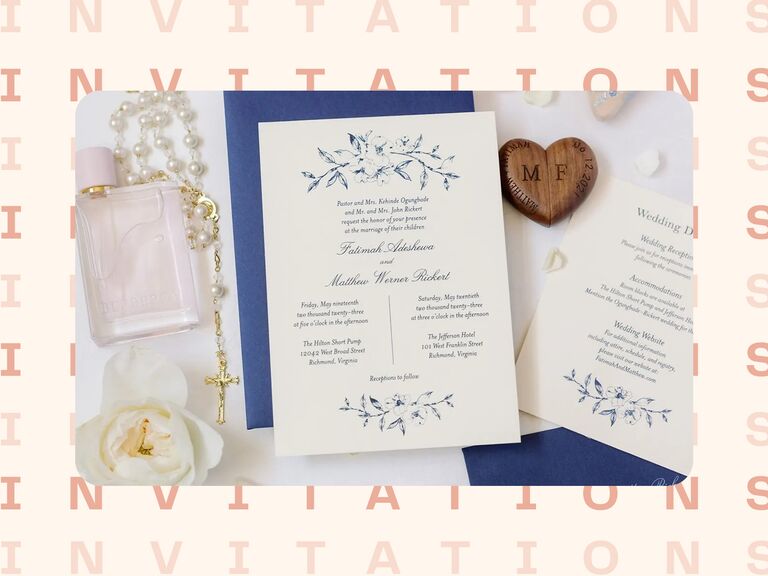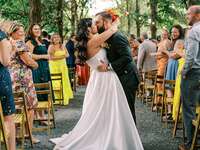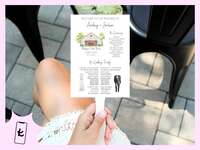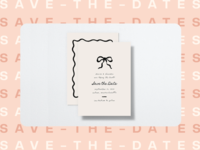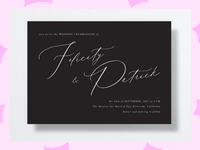How to Properly Write the Date and Time on Your Wedding Invitation
You may feel like the hard work is done once you've nailed down your dream wedding stationery, but chances are you'll still find yourself faced with one major question: How do you write the date on a wedding invitation? Should you spell out the numbers in full or go with numerals? Is "five o'clock" considered "in the afternoon" or "in the evening?" Unlike formatting your wedding website, the rules are a little stricter when it comes to putting your wedding date on invitations.
Before you start to feel overwhelmed, we'll let you in on a little secret: Nailing the proper way to write the date on a wedding invitation means sticking to just a few simple rules. To get you feeling like an etiquette pro in no time, we enlisted the help of Lindsay Buwalda, founder of California-based event design, planning and lifestyle production company Bliss Productions. Ahead, we're breaking down exactly how to write the date and time formally, along with a few alternative options should you wish to take a more casual route.
In this article: How to Write the Date on a Wedding Invitation | How to Write the Time on a Wedding Invitation
Plus: Should You Include an Earlier Start Time for Late Guests? | Wedding Invitation Date and Time Format FAQ
Example of Proper Dating and Timing on a Formal Invitation
According to Buwalda, the proper way to write the date and time on invitations is by spelling out both in full. "It feels timeless and formal, and I love that elegance when it fits the couple's vibe," she says. Here's an example of proper dating on a formal invitation so that when it's time to send wedding invitations, you'll have no questions regarding wording etiquette.
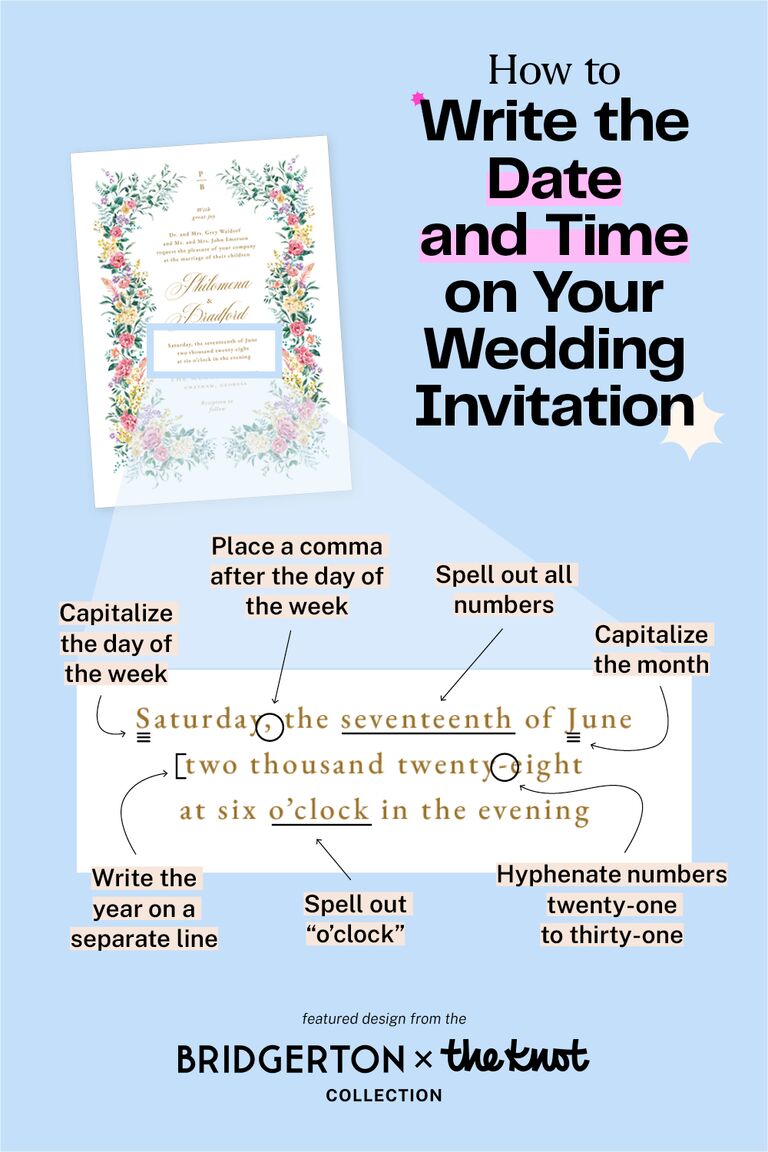
How to Write the Date on a Wedding Invitation
The most formal way of writing the date on your wedding invitations is to spell it out completely, rather than using numerals. Here are some examples:
-
Saturday, the twenty-second of November
two thousand twenty-five -
Friday, the ninth of January
two thousand twenty-six -
Sunday, the twelfth of May
two thousand thirty
Day of the Week
When it comes to how to write dates on invitations, the day of the week should be capitalized (unless your wedding invitation's font is all uppercase or lowercase). There should also be a comma between the day of the week and the date.
- Saturday
Date
If your wedding takes place on the 21st through the 31st of a month, use a hyphen in the number. Only the month is capitalized, and it must be written out fully without any abbreviations.
- the twenty-third of May
- the fifteenth of June
- the thirty-first of August
Year
The year is typically written on a separate line from the day of the week and the month, in all lowercase letters, with no comma between the month and the year. There's no hyphen between "two thousand," but there is a hyphen in the compound number following it (twenty-five).
- two thousand twenty-nine
- two thousand thirty
- two thousand thirty-one
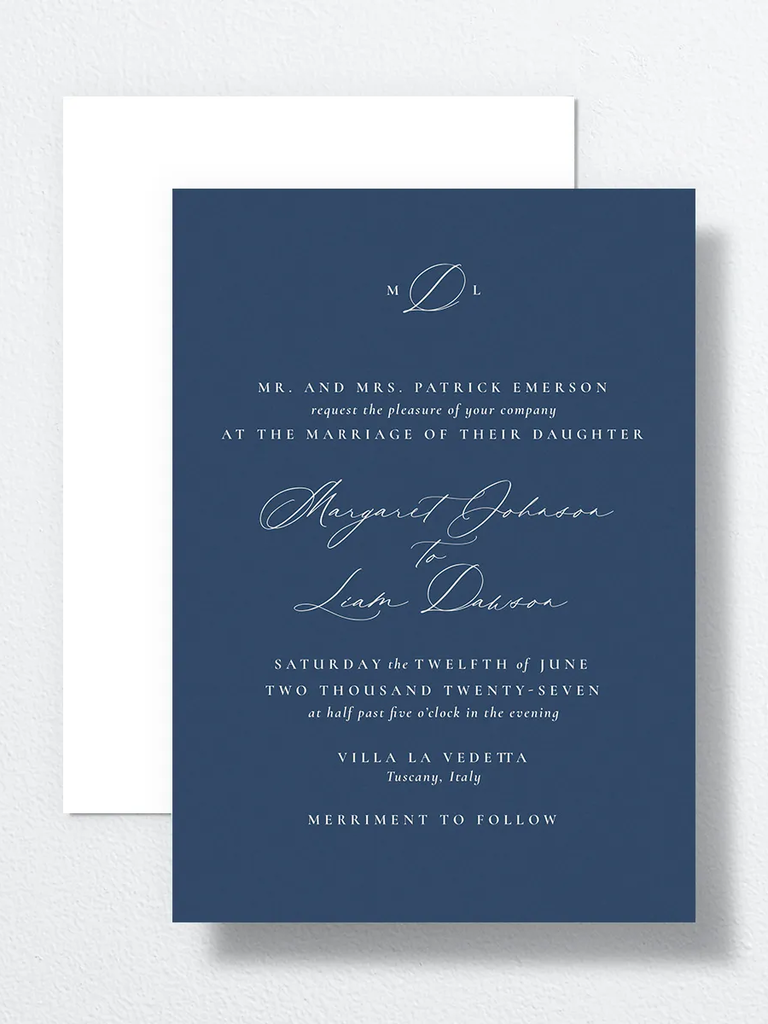
How to Write the Time on a Wedding Invitation
To write the time on a wedding invitation formally, spell out all numbers in lowercase letters. You'll also want to spell out "o'clock" and use "half after" (rather than "half past") for times on the half-hour. Here are some examples of what this would look like for morning, noon, afternoon and evening ceremony times. (Psst: Wondering what time weddings usually start? We've got you covered.)
How to Write Morning Wedding Time on Invitations
Follow the time with "in the morning" for weddings starting before noon.
- at ten o'clock in the morning
- at half after eleven o'clock in the morning
How to Write Noon on Invitations
Watch out for this wedding invitation mistake—it's best to write "noon" instead of "12:00 p.m." for weddings beginning at noon.
- at noon
How to Write Afternoon Wedding Time on Invitations
For weddings starting after 12 p.m. and before 6 p.m., write "in the afternoon" after the time.
- at half after four o'clock in the afternoon
- at five o'clock in the afternoon
How to Write Evening Wedding Time on Invitations
For a sunset wedding after 6 p.m., write "in the evening" after the time.
- at six o'clock in the evening
- at half after seven o'clock in the evening

Do You Put the Actual Start Time or Please Arrive By on Wedding Invites?
Wondering about wedding invite start time vs actual start time? Wedding invitation etiquette states that it's best to put the actual start time of your wedding on the invitation, rather than using "please arrive by" to prevent late guests. "This is something I've seen couples do, but I always encourage honesty paired with gentle expectation-setting," Buwalda says. "If you're worried about guests running late, add a line like 'Ceremony begins promptly at half after five o'clock' or 'Please arrive early to be seated by five twenty-five.' Guests appreciate clarity and it avoids unnecessary stress." To provide even more clarity for your guests, check out our Guest List Tool that allows couples to easily send RSVP reminders via email and collect RSVPs to keep them organized and all in one place.
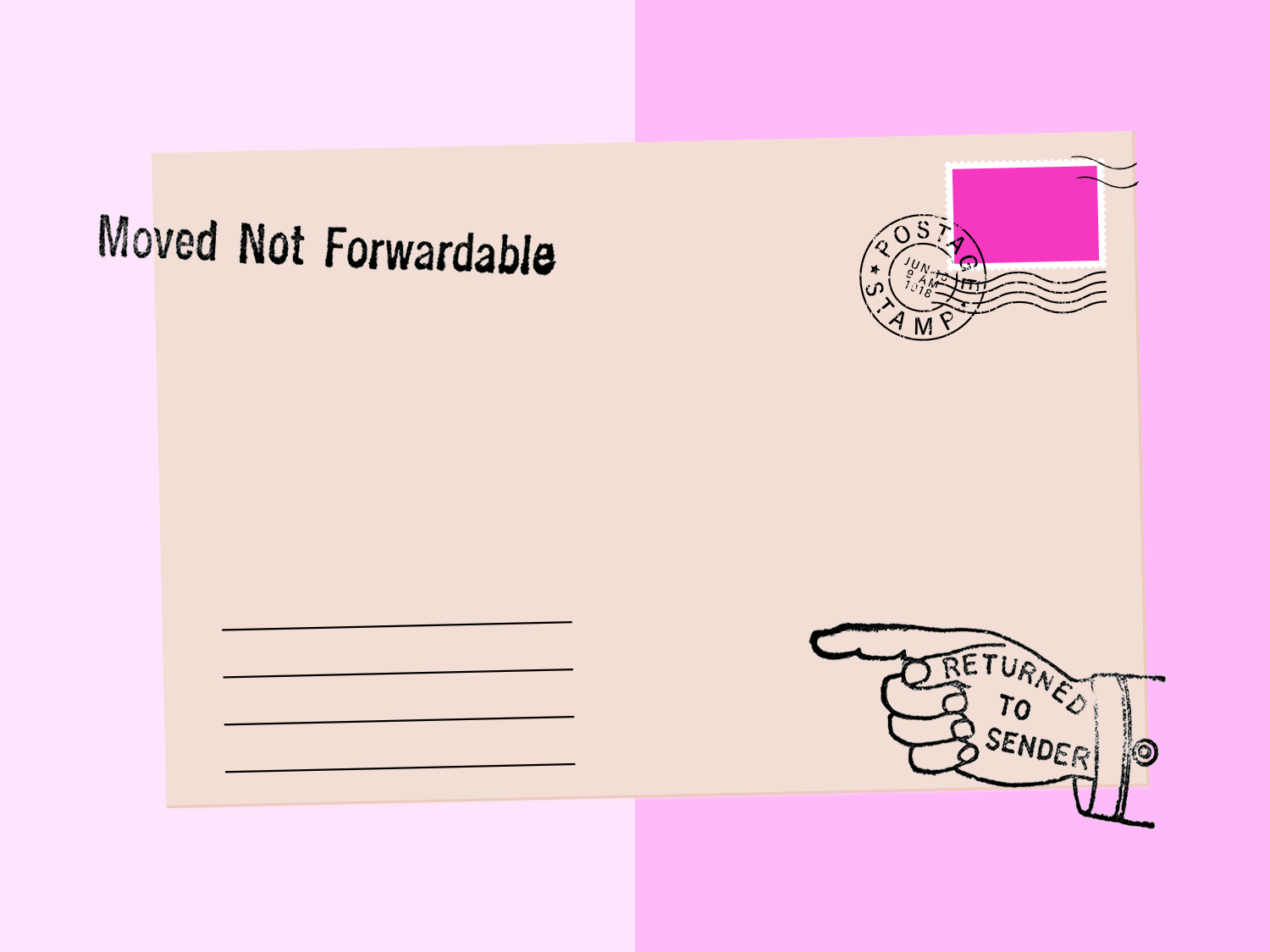
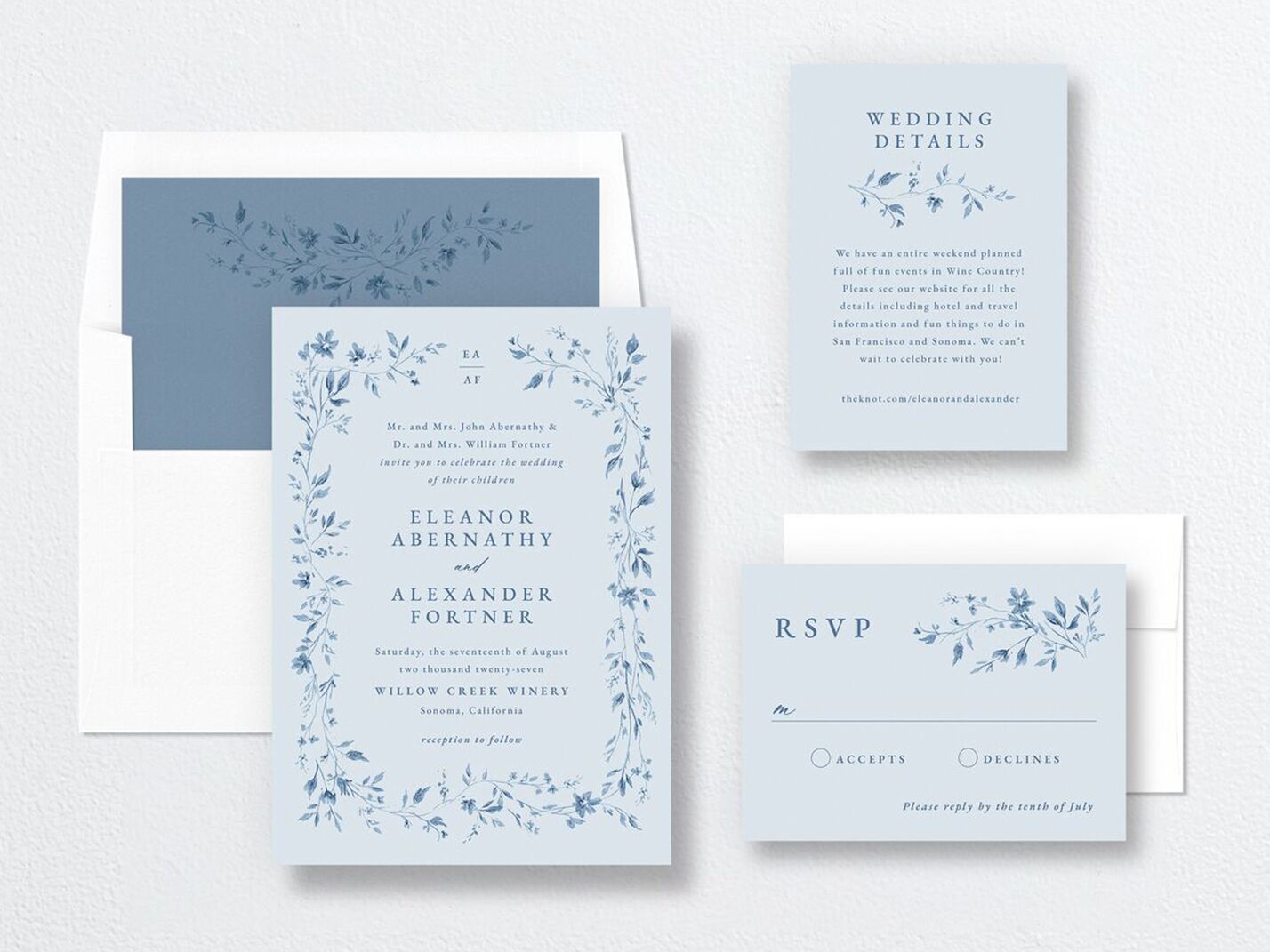

Wedding Invitation Date and Time Format Frequently Asked Questions
Still have questions about proper dating on formal invitation suites? With the help of Buwalda, we're addressing your biggest concerns below.
Should We Include Separate Start Times for the Ceremony and the Reception?
Your wedding invitation typically only needs to include the date and time of the ceremony. If your reception is immediately following your wedding ceremony in the same location, you can simply write "reception to follow" or "dinner and dancing to follow" at the bottom of your invitation. However, the rules surrounding what time to put on wedding invitations when the reception comes several hours after the ceremony or takes place in a different location is slightly different. In this case, it's best to include a separate reception start time. "This helps guests plan accordingly and reduces confusion," Buwalda says. "That said, keep the design clean—two distinct time blocks is all you need."
Do We Need to Write the Wedding's End Time on the Invitation?
It's not necessary to include the wedding's end time on your invitation. "This isn't expected and can make the event feel overly structured," Buwalda says. Most guests know weddings can continue into the night, and unless there's a strict cutoff—like at a venue with a curfew or limited transportation—we suggest leaving it off. If you want to be ultra-specific, this is a great example of what to put on your wedding website over your invitations.
Do You Share Cocktail Hour Start Time?
There's no need to share the start time of the cocktail hour on your wedding invitation. If your cocktail hour will be at the same venue as your ceremony, the change should flow naturally after your ceremony ends. If your cocktail hour will be in a different location, clarifying both the ceremony start time and the reception time on your invitation or wedding details card should provide enough clarity—no need to add the cocktail hour time too. "I recommend just noting the ceremony and reception start times and leaving the transitions to your wedding planner," Buwalda says.
Do We Have to Use the Most Formal Date and Time Format?
While there are certainly best practices when it comes to how to write the date and time on wedding invitations, "traditional" may not be your taste—and that's totally okay. "Your invitation should reflect you," Buwalda says. "If your wedding is more relaxed—say, a backyard celebration or mountaintop ceremony—your wedding invitation wording can be too." Simpler phrasing like "Saturday, May 25 at 5:30 p.m." works beautifully for modern or casual weddings.
For a date on wedding invitations that feels slightly more laidback—or perhaps uses different formatting as a stylistic element—you might consider dropping the day of the week and even the year, as most will assume your big day takes place on the nearest such date. You could also drop the "a.m." or "p.m." as the time of day is typically clear as well. (For example, it's highly likely a three o'clock ceremony will be in the afternoon rather than the middle of the night).
Regardless of your preference on how to write your wedding date on invitations, just make sure the tone across your entire suite is cohesive. "The most important thing is clarity," Buwalda adds. "If spelling it all out creates confusion or feels overly stuffy for your style, it's okay to modernize." Here are some modern and casual examples of how to write a date on a wedding invitation.
- Sunday, September 23 at 5:30
-
Saturday, May 17, 2025
at 4:30 p.m. - Friday | Nov 21 | 6:30
-
08.15.2026
at 5:30 p.m.
